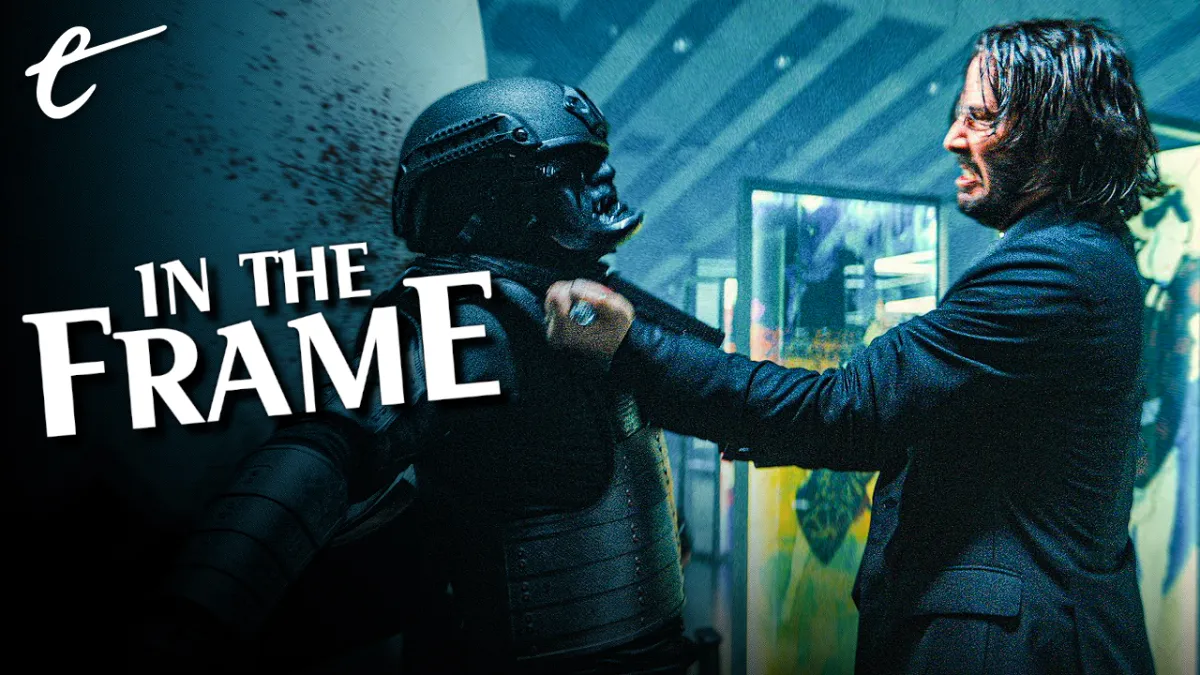“Art is pain,” explains the Director (Anjelica Huston) in John Wick: Chapter 3 – Parabellum. “Life is suffering.”
These six words seem to reflect the reality of the John Wick franchise, a film series about characters caught in an eternal loop of violence and brutality. However, it also hints at one of the recurring preoccupations of these action blockbusters. In many ways, both textually and subtextually, the John Wick movies can be read as an argument for stunt work as an artform unto itself, a mode of creative expression just as valid as any other. After all, stunt work is often literally art from pain.
The John Wick films are action movies in the purest sense of the word. John Wick (Keanu Reeves) is a man of few words but is defined by action. Both Viggo (Michael Nyqvist) and Abram Tarasov (Peter Stormare) separately define Wick as “a man of focus, commitment, and sheer will.” He manifests that will through action. While Viggo monologues about Wick’s inhuman abilities, the movie crosscuts with Wick himself demonstrating them. The implication is obvious: Others talk, but Wick does.
The events of the franchise are spurred by Viggo’s son, Iosef (Alfie Allen), who kills Wick’s dog and steals his vintage car. When Viggo calls John in the hopes of preventing a bloodbath, John remains silent on the other end of the phone. “What’d he say?” asks Avi (Dean Winters), Viggo’s top lieutenant. Viggo responds, “Enough.” John doesn’t talk too much over the movies that follow, but it seems fair to suggest that he makes himself heard as he rampages through the underworld.
John Wick was directed by Chad Stahelski and David Leitch, two former stuntmen. While Leitch left the franchise to direct other action films like Deadpool 2, Atomic Blonde, and Bullet Train, Stahelski has remained a guiding light for the series. Indeed, Stahelski has a long history with Reeves, serving as his stunt double on the Matrix movies, which were directed by Lana and Lilly Wachowski. Indeed, the John Wick movies often feel like a Matrix reunion, even folding in fellow Matrix alum Laurence Fishburne.
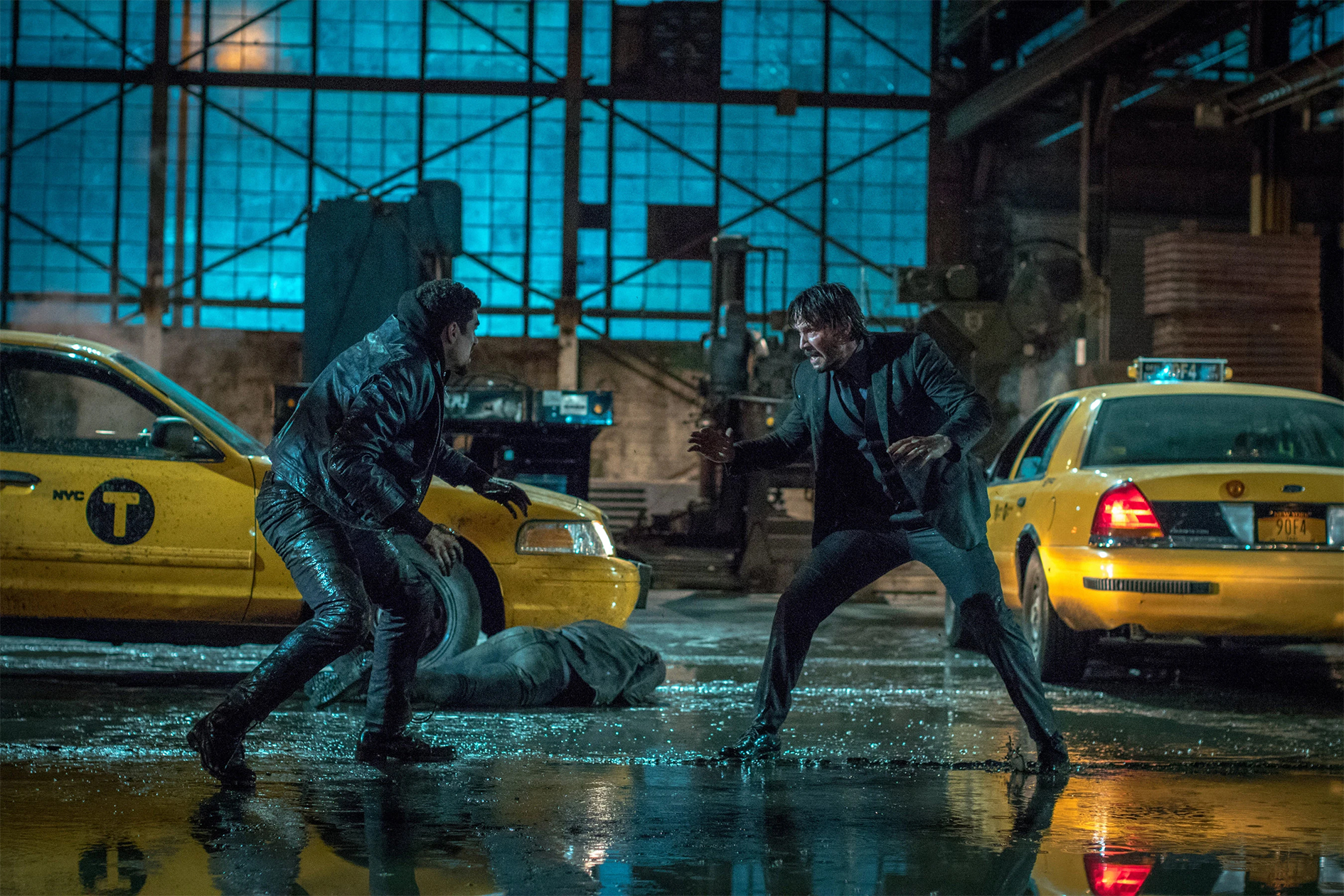
Stahelski has talked about how he went from doing car stunts on the television show The Pretender to auditioning to work on The Matrix that same morning. “So I got hit by a car, cracked my head open, and managed to make an 11 a.m. audition in Burbank from Pasadena,” he relates. That combination of punishment and professionalism permeates the John Wick franchise, in which the suited protagonist frequently has to pick himself up from one grueling stunt to get to the next.
It was Reeves who brought Stahelski and Leitch on to John Wick. “Originally I was thinking they’d just shoot the action,” Reeves has explained, “but I was also kind of hoping they would want to direct it.” For the duo, it was a logical career progression. “Stunt coordinating is a good training ground for directing, because you have exposure to all the departments in film,” Leitch stated in interviews around the original film. “There’s a lot of directing within the stunt coordinator’s job.”
As Hollywood leaned more heavily into computer-generated spectacle, the John Wick movies defined themselves by showcasing more traditional action. “Fight scenes or technical things,” Stahelski argued. “It’s about showing. It’s not about hiding. Unfortunately, in most blockbusters today, they try to hide more than they try to show.” In contrast, the John Wick films rely heavily on stunt choreography and in-camera effects rather than computer-generated effects and editing tricks.
This was part of the appeal of working with an actor like Reeves, who had extensive experience performing stunt choreography. “He was trained like a stunt performer or a martial artist so he could transcend just memorizing what he had to do,” Leitch remarked of the franchise’s leading man. So, just by virtue of its pedigree and the talent involved, the John Wick franchise was always going to be a celebration of the long and important tradition of stunt work in popular cinema.
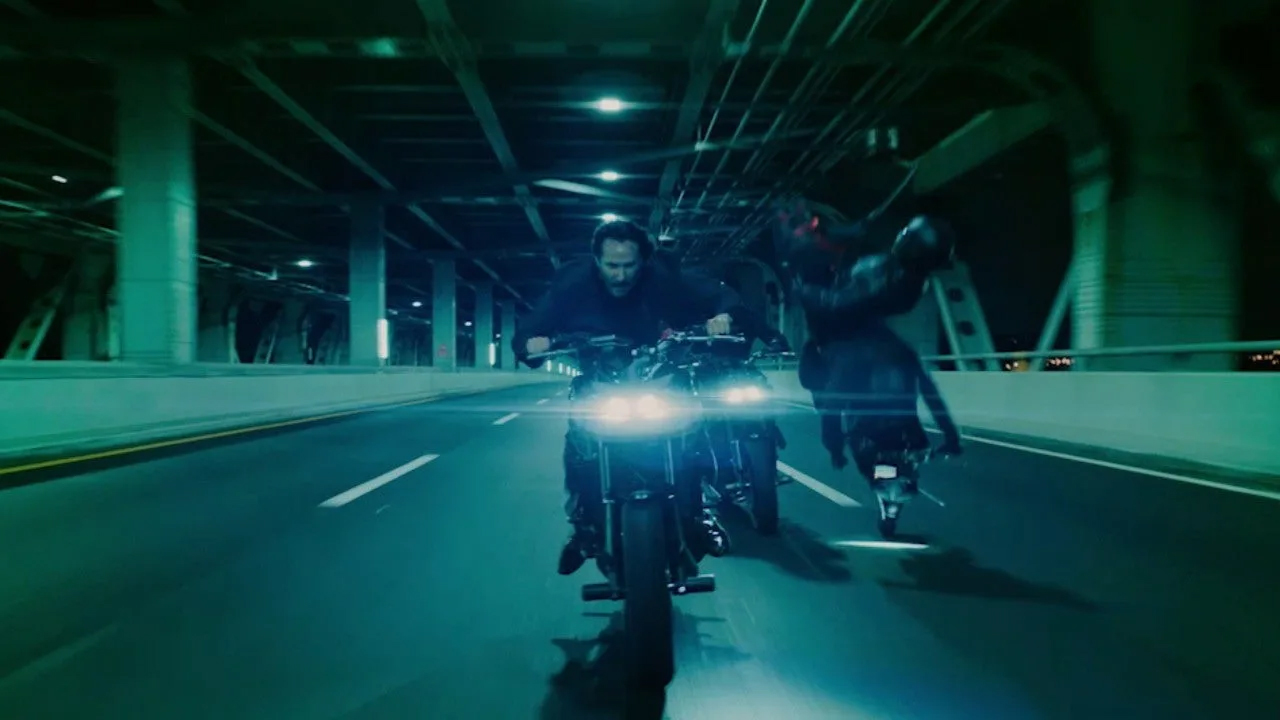
After all, stunt work really doesn’t get the credit that it deserves. It is a dangerous profession, with two performers dying on productions during the summer of 2017. Stunt work is not covered by many traditional film insurance policies, often underwritten as separate “stunt buyout” policies. Producers have historically tried to swindle stunt performers out of residuals. Recent years have seen a sustained campaign for the Academy to recognize stunt work with its own awards category. Stahelski and Reeves themselves are of this opinion.
The John Wick films are engaged with the idea of stunt work as an artform unto itself, one with a history that is as long and rich as that of Hollywood itself. This becomes more pronounced in the sequels. John Wick: Chapter 2 is bookended by two references to silent cinema. In the movie’s opening scene, Buster Keaton’s Sherlock Jr. is projected on the wall of a traffic intersection as a car chase plays out underneath it. The movie’s hall-of-mirrors climax evokes Charlie Chaplin’s The Circus.
In the silent era, there was little delineation between actors and stunt workers. Performers committed to dangerous stunts in-camera for the audience’s amusement. There are many terrifying examples of actors risking their lives in pursuit of a perfect shot, such as Keaton agreeing to have the façade of a house dropped on him in Steamboat Bill, Jr. This stunt was replicated in Jackass 2, which feels like another unlikely piece of modern media trying to connect with Hollywood’s history.
John Wick: Chapter 2 juxtaposes this violent world of assassins and criminals with more traditional forms of artistic expression. There are shoutouts amid the Baths of Caracalla in Rome and outside the Lincoln Center in New York City. The climax unfolds at the fictional New Modern NY, in which Wick takes cover amid sculptures and portraits. Of course, these are also visually interesting locations in which the production team can stage action set pieces, but it is a recurring preoccupation for the film.
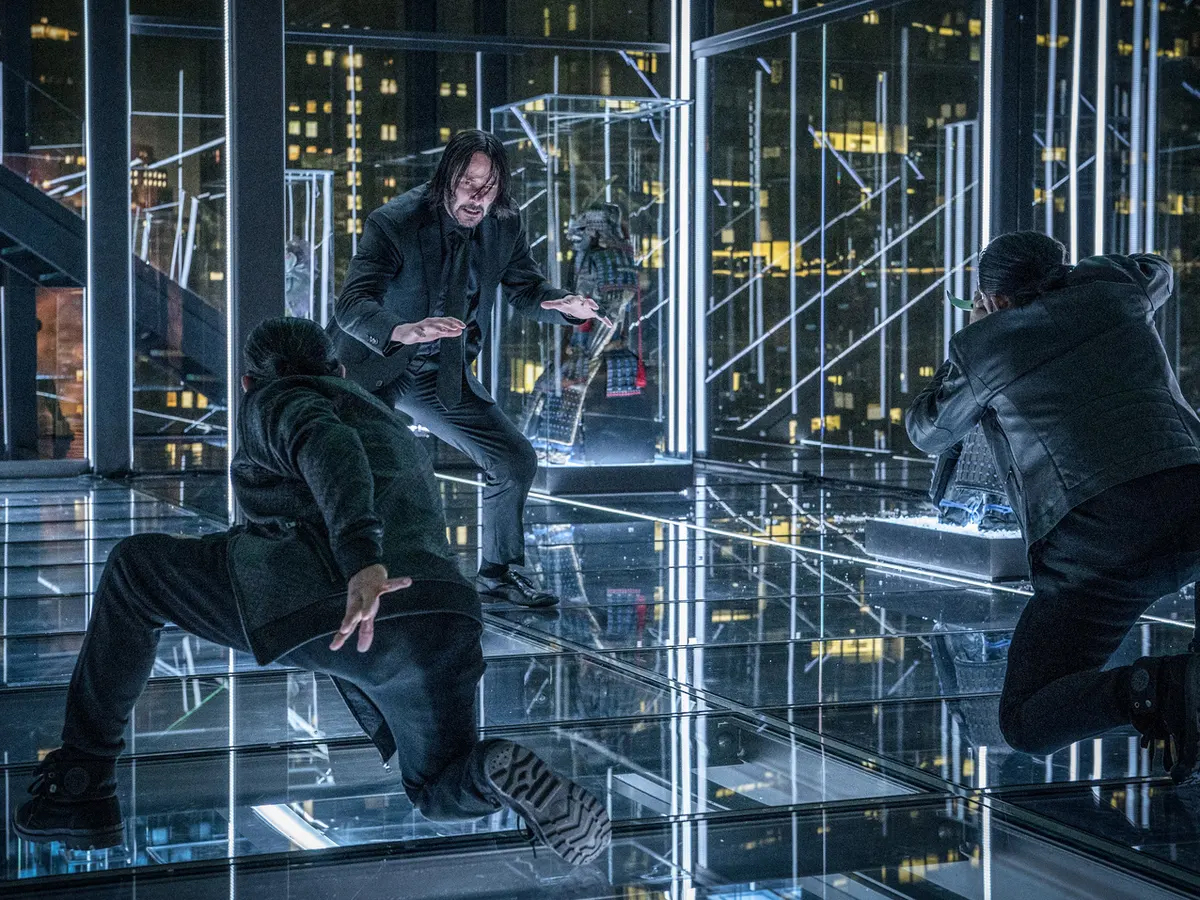
The film’s villain, Santino D’Antonio (Riccardo Scamarcio), is defined in part by his indifference to art. “This was my father’s collection,” he tells Wick. “I see little more than just paint on canvas, of course. But I do find myself here.” D’Antonio’s inability to appreciate the artistry of what is presented to him doesn’t diminish that artistry. Many of the sculptures surrounding D’Antonio celebrate the human body in motion. Through their stunt choreography, the John Wick movies do something similar.
However, the theme becomes most overt in John Wick: Chapter 3 – Parabellum. In the third film, the audience finally gets some sense of Wick’s origins, as he seeks the safety and protection of the Director at her ballet school. It is heavily implied that Wick studied at this school, and the film consciously parallels the brutality of these trained assassins with the grace of the Director’s ballet students. These are both professionals who have honed their bodies into instruments of art.
This school is hugely important to the mythos of John Wick. At the end of Parabellum, the closing credits return repeatedly to out-of-focus shots of the ballet dancers, with Stahelski’s directorial credit superimposed over one such performer. One of the franchise’s proposed spinoffs is simply titled Ballerina. It makes sense that Wick should have honed his craft at a ballet school. Although Stahelski insists it was not an intentional parallel, Jackie Chan learned his art at the Peking Opera School.
“People think we do martial arts. We don’t. We do dance,” Stahelski has explained of the ballet metaphor. “It looks like martial arts. It looks like fights. But it is dance.” This is not an especially radical point of comparison. It is also reflected in director Darren Aronofsky’s back-to-back Best Picture nominees, The Wrestler and Black Swan, which are two movies about people dedicating their bodies to their artform. Aronofsky famously originally conceived them as one intertwined story.
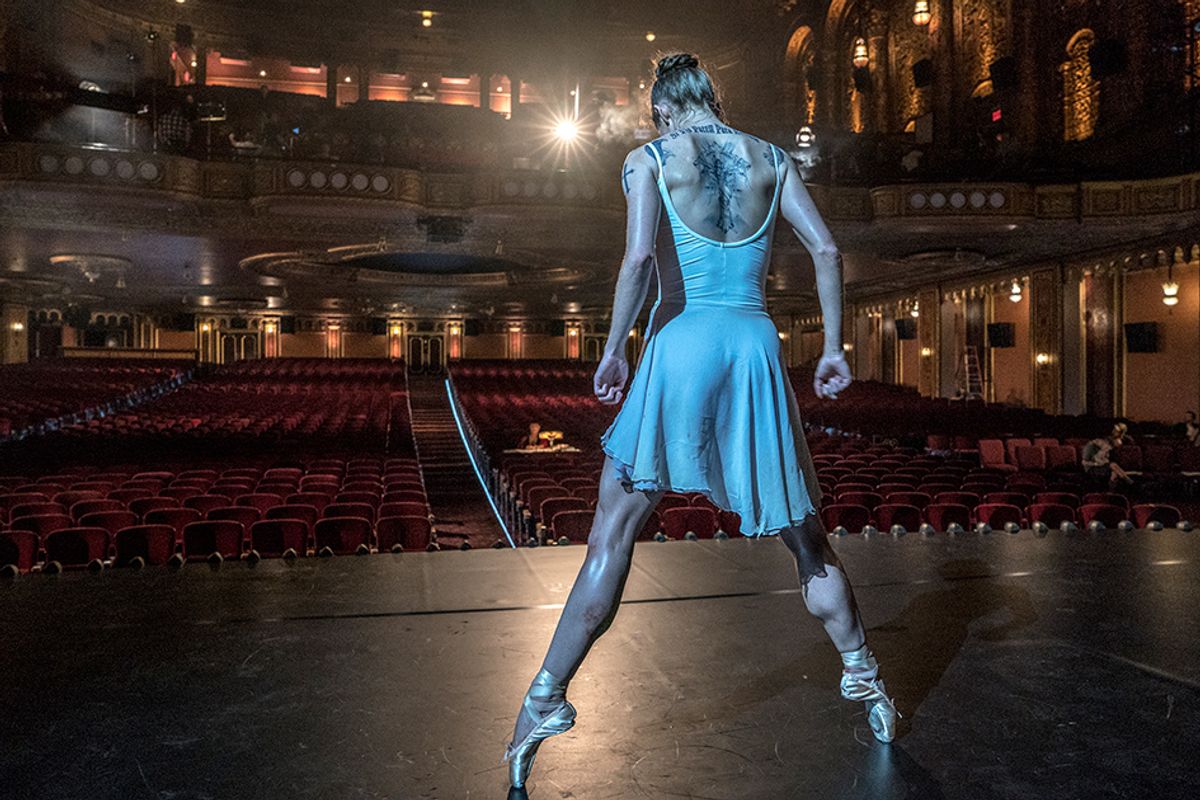
Central to all of this is the importance of action and dynamism as a storytelling form of itself. This is also a key thematic concern of the John Wick movies, which juxtapose the trappings of civility and politeness with the brutality of the world in which these characters operate. There is a recurring sense in the John Wick films that, beneath all the niceties and formal conventions, these characters find their truest mode of expression through action rather than dialogue.
This is central to Stahelski’s storytelling philosophy. “Action is storytelling,” Stahelski contends. “It’s visual storytelling. James Cameron does it great. Spielberg does it great. Fincher does it great. Guy Richie in Snatch does it great. I think Shane Black does a great job. They tie the story into action. Whether it’s a little one punch thing or whether it’s a whole sequence, they know that they will shoot their own action.” The John Wick movies understand cinematic action as a language of itself.
The John Wick movies are more than just a demonstration of stunt work as an artform unto itself. They are also an argument for the importance of stunt work as a mode of artistic expression.

